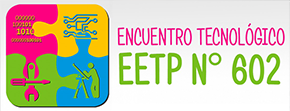2.dos “Relatedness” Because the Viewed Of the Historic Semantics
You can dÄ›lá dine app práce rest assured, including – and particularly – certainly one of advantages, which our intellectual words is highly organised. There are a lot of relations within solitary words from a code and definitions of these conditions, correspondingly. One of linguists, these types of relationships are known as “semantic connections”, “feel affairs” otherwise “lexical affairs”. These types of semantic interactions is analysed and you may discussed for area, as well as in the following, the first of those of those connections will be exhibited.
So you’re able to bring a primary, vital breakdown of your own cutting edge, it must be asserted that there are lots of studies on this thing. However, that it papers can simply were a lot of them. Literary works which had been used can be obtained around part half a dozen, “Set of Work Quoted”. Enterprise delimitations just have already been generated in terms of outline is worried. Since this report is only a highly small bit of research, new experts have confined themselves to not get into way too much detail, but instead make an effort to promote an excellent survey of point.
dos.step 1 Polysemy And you can Homonymy
Polysemy can be defined as “a phrase found in semantic investigation to mention so you’re able to a good lexical product that has various other significance” (Crystal 1997, 297). Amazingly gets as the example getting polysemy the lexical product “plain”, which has the various definitions “clear”, “unadorned”, “obvious”, an such like.(ibid. Crystal).
Today, the problem that arises to own linguists is exactly how to identify polysemy out-of a different ambiguity, out-of homonymy. Amazingly defines homonymy while the “a term included in semantic study to refer so you can [2 or more] lexical goods that [happen to] have a similar setting, however, differ when you look at the definition” (Crystal 1997, 185). Crystal’s instances listed below are “bear” and “ear”. “Bear” can be establish an animal otherwise may have the definition of “to carry”, “ear” can relate to your body or even corn (ibid. Crystal).
In these advice, homonymy discusses both spoken and you can created models, but it is in addition to possible that new name off one or two lexemes is in an individual typical, in which particular case linguists create speak of partial homonymy or heteronymy (ibid. Crystal). One could separate 2 kinds of partial homonymy:
– Homography: a few lexical affairs have the same written means, but disagree inside pronunciation (an example is the two lexical items of “lead”, you to pronounced [li:d] and you may meaning “to stay front side”, one other noticable [led] and you will determining yet another form of metal). – Homophony: several lexical factors have the same enunciation, but disagree when you look at the spelling
(age.grams. the two lexical circumstances “led” and you will “lead”, both of which happen to be pronounced [led], the original as the earlier in the day tense from “to guide”, the latter once more determining a different style of material).
two types From Ambiguity
Hence, polysemy and you will homonymy shall be popular off each other by existing or missing relatedness within meanings which is assigned to just one phonological form. What’s the core of your number, is the matter from what the quantity this notion away from “relatedness” are specified. This means that: just how can “relatedness” be defined? If an obvious and right meaning was offered, the complete state would be fixed, to possess then your experience regarding phonological models whose relatedness are ended up was entitled “homonymy”, whoever relatedness can not be turned out would-be named “polysemy”. But not, while the goes so frequently in neuro-scientific semantics, one cannot simply offer an obvious and you may indisputable definition of the word “relatedness”. There are two very first ways to this matter, you to definitely offered by historic semantics, others by the synchronic semantics.
Historic semantics interprets the idea “relatedness” mostly naturally which speaks off polysemy if good lexeme with more definitions carries the same etymological root (Kastovsky 1982, 121). Examples is actually “game” for the a couple of significance “wild animals” and “playful pastime” otherwise “funny” meaning possibly “strange” otherwise “amusing”. Both instances tell you lexemes whose additional definitions have a similar etymological roots and tend to be for this reason interpreted since polysemy of the historic semantics.



















